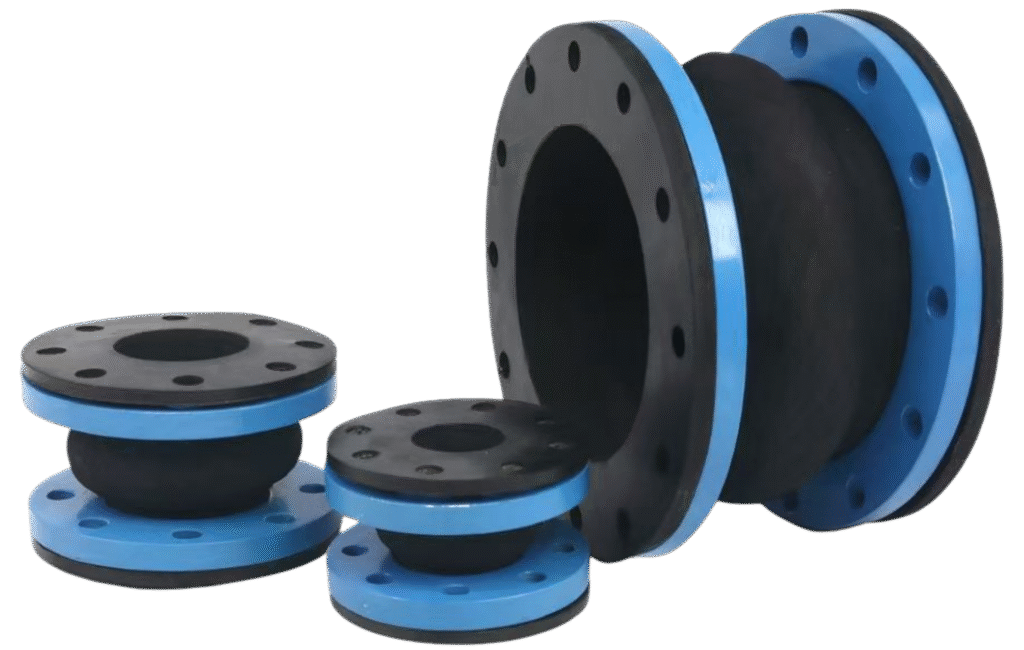HAND-WRAPPED RUBBER EXPANSION JOINT
PRODUCT > HAND-WRAPPED RUBBER EXPANSION JOINT
What is a Hand-Wrapped Rubber Expansion Joint?
A hand-wrapped rubber expansion joint is a type of rubber joint manufactured through multiple manual processes such as rubber layering, winding, and hand vulcanization. Unlike molded joints that rely on fixed molds, this type can be custom-made in any diameter and length, making it ideal for non-standard or complex operating conditions. Its wound construction allows for internal reinforcement with steel wires or steel plates, enhancing its stability under vacuum negative pressure or high-pressure environments. Whether in high-temperature or corrosive environments, or pipe systems requiring special shapes, hand-wrapped rubber joints can adapt with ease. Wound-type rubber expansion joints can be customized in any diameter and length according to customer requirements, making them suitable for various operating conditions. For vacuum negative pressure applications, internal steel wires and steel plates can be embedded.
Our project case
In marine engineering piping systems, specially customized EPDM-wrapped rubber expansion joints with non-standard lengths are used for sewage discharge applications.
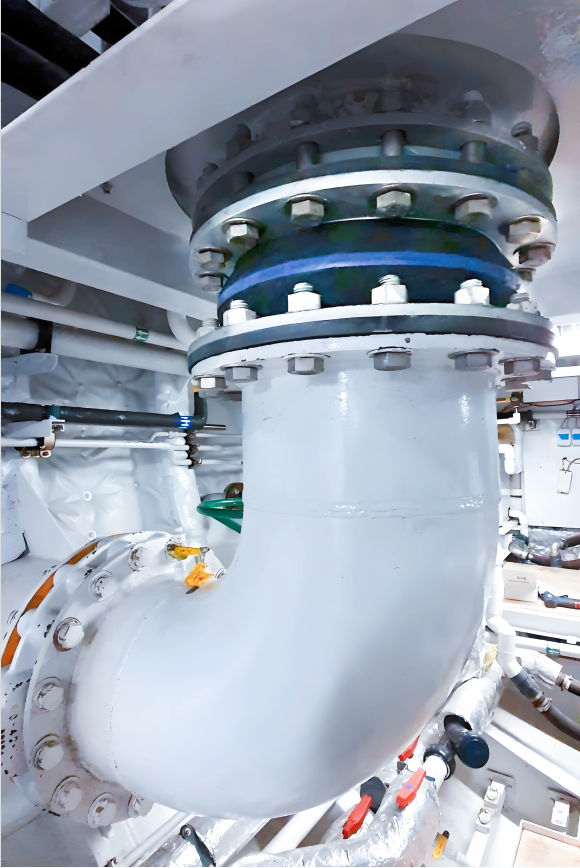
Hand-Wrapped Rubber Expansion Joints Classifications
Common types include standard type, vacuum-resistant type, high-temperature-resistant type, high-pressure-resistant type, and non-standard customized type, suitable for different media, temperature, and pressure conditions. Customers can select the appropriate model based on their actual operating environment and process requirements, or provide drawings for customization.
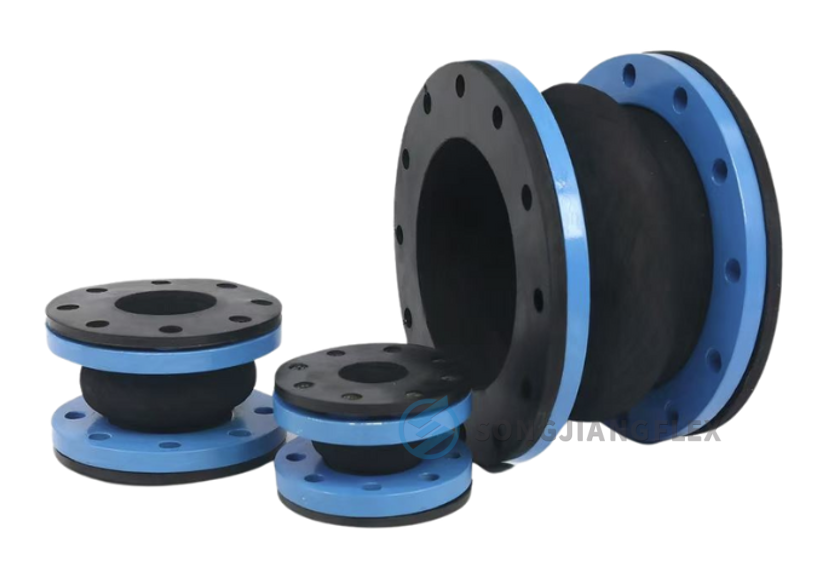
Single Arch Fully Hand-Wrapped Rubber Expansion Joint

Multiple Arch Fully Hand-Wrapped Rubber Expansion Joint
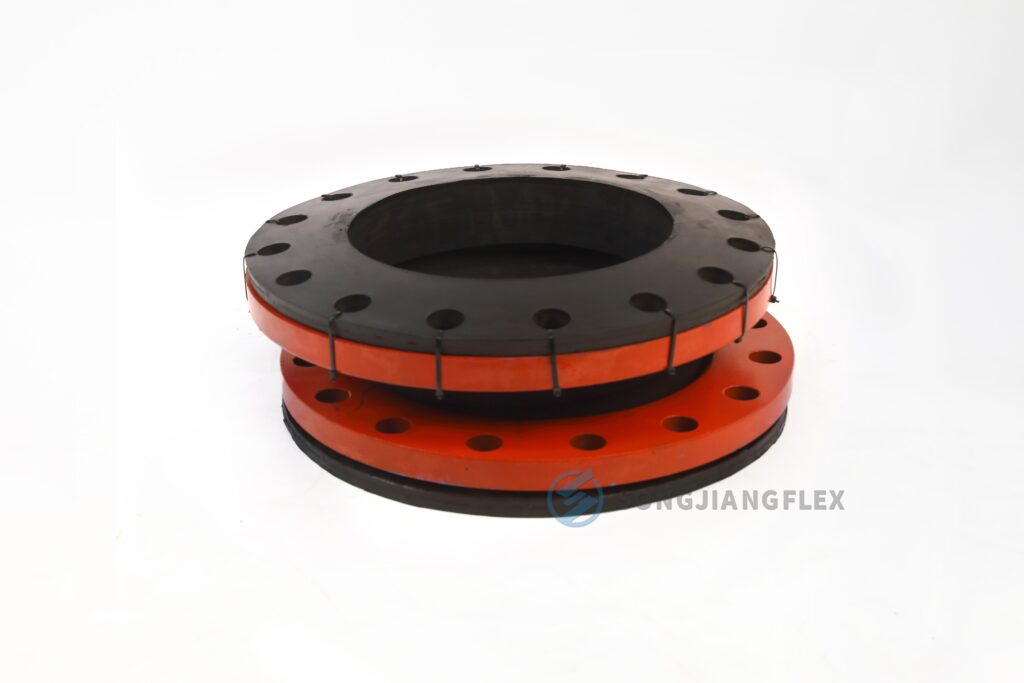
Concentric Reducer Hand-Wrapped Rubber Expansion Joint
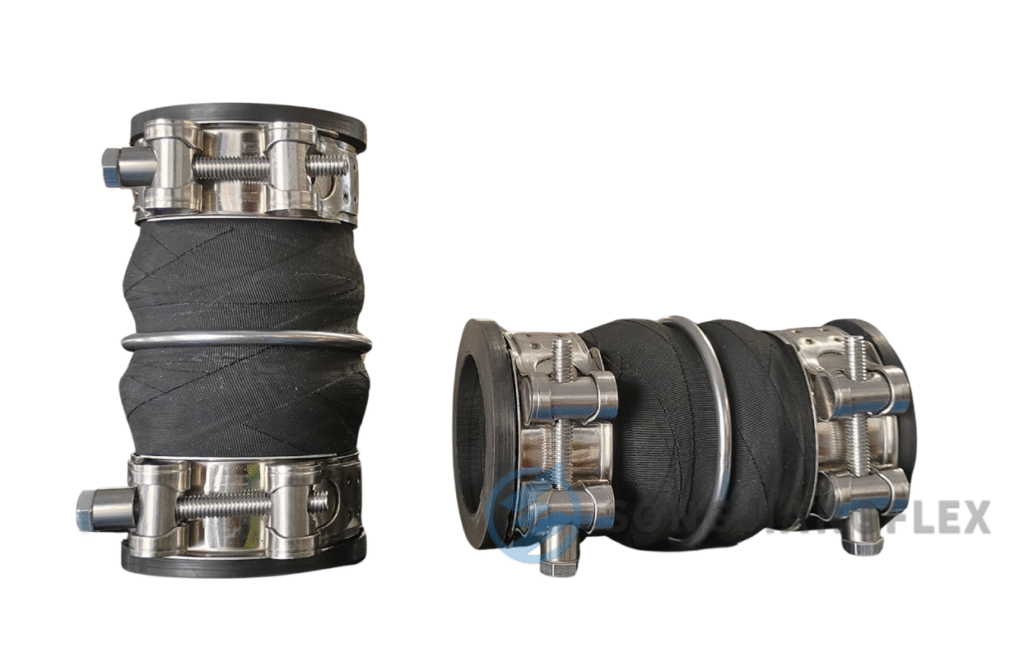
Clamp-Type Hand-Wrapped Rubber Expansion Joint
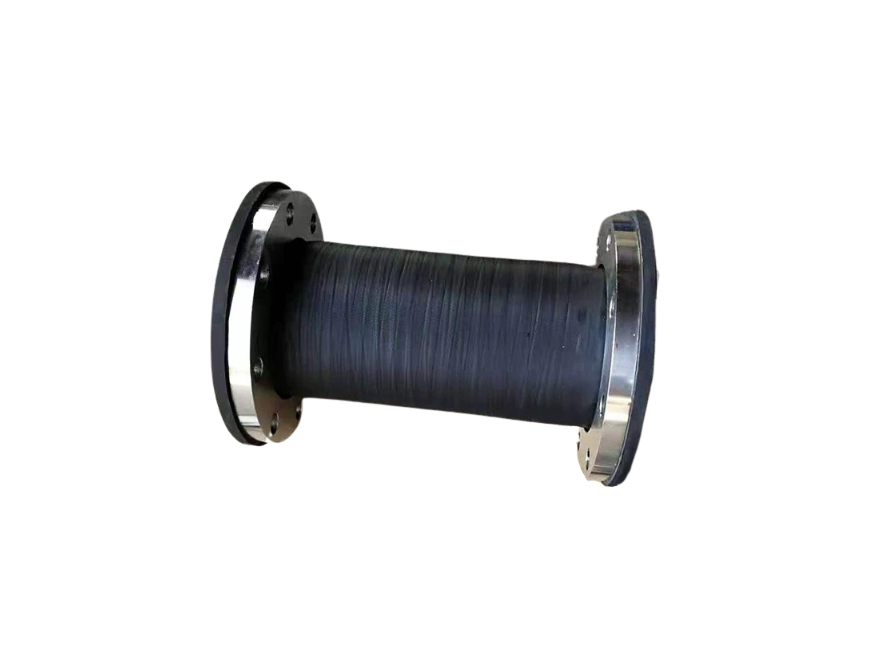
Straight-Type Hand-Wrapped Rubber Expansion Joint
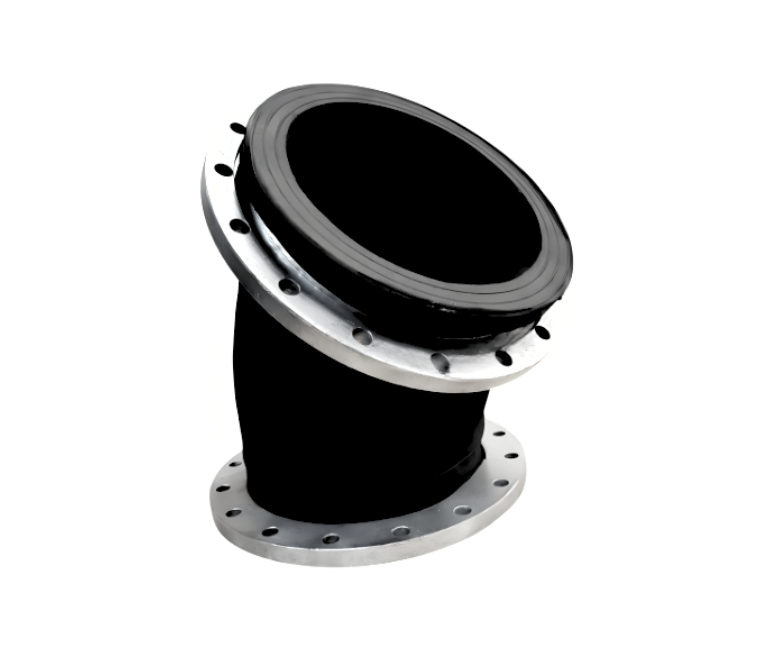
Elbow-Type Hand-Wrapped Rubber Expansion Joint
What Are the Types of Hand-Wrapped Rubber Expansion Joints?
Hand-wrapped rubber joints can be classified based on structure and application environment as follows:
Standard type: For general industrial pipelines, with basic flexibility, shock absorption, and displacement compensation.
Vacuum-resistant type: Reinforced with internal steel wires or plates, designed for vacuum conditions like suction systems or vacuum pipelines.
High-temperature type: Uses Viton or high-performance EPDM rubber, suitable for thermal systems up to 204°C (or higher).
Heavy-duty (High-pressure) type: Reinforced fabric layers and structure capable of withstanding up to 225 PSIG pressure.
Custom non-standard type: Tailored based on customer drawings or requirements, including shape, flange type, length, etc.
These joints can be custom-made for vacuum, high-temperature, high-pressure, or special structure needs. The multi-layer winding design ensures maximum flexibility and strength.
How Do Hand-Wrapped Joints Handle Vacuum and High-Temperature Conditions?
Thanks to their reinforced structure—capable of embedding steel wire and plates—hand-wrapped joints are especially reliable in vacuum, high-pressure, and high-temperature environments.
Wide temperature range: From -30°C to +250°C (even higher intermittently)
Rubber material options:
EPDM: up to 300°F / 149°C
Viton: up to 400°F / 204°C
Fabric reinforcement: High-strength aramid or heat-resistant polyester layers
Pressure resistance: Up to 225 PSIG depending on size
Vacuum performance: Withstands 30 inches Hg vacuum across all sizes
These joints are ideal for demanding environments like chemical plants or power stations, withstanding extreme heat and vacuum conditions up to 250°C.
Why Install Control Units on Hand-Wrapped Rubber Joints?
While rubber expansion joints offer flexibility and displacement compensation, control units (limit rods) may be necessary depending on the application.
4 key situations requiring control units:
Prevent excessive movement: Avoid pull-out, deformation, or misalignment.
Absorb thrust: Protect pumps, valves, and flanges from axial forces.
Unstable installations: For underground, suspended, or poorly supported systems.
High-pressure, high-displacement systems: Essential for safety and reliability.
Typical control unit components:
Control Rods
Double Nuts
Steel Washers
Control Plates
Retaining Rings
These components limit movement, prevent pull-out, absorb shock, and help bear pressure.
In high-pressure or unstable piping systems, installing limit devices is essential to prevent damage, leakage, or failure.
How Does the Manual Process Ensure Product Quality?
Every hand-wrapped rubber joint is crafted by skilled artisans. From selecting raw materials to multi-layer winding and precision vulcanization, every step follows strict quality standards:
✅ Material control: Uses premium rubber and fabric for corrosion resistance and elasticity
✅ Process traceability: Every step is traceable—ideal for high-standard projects like petrochemical or power plants
✅ Rigorous testing: Every batch is pressure tested, burst tested, and undergoes high-temperature and fatigue tests
Our commitments include:
3-year warranty for standard products
2-year warranty for high-temp or chemical-resistant types
1-year warranty for custom products
If any quality issue arises, we promise a written response within 12 hours and a solution within 24 hours, including free replacement for confirmed product issues.
All joints are hand-built by professionals, strictly following material and process standards. Each unit is performance-tested and comes with up to a 3-year warranty and fast-response after-sales support.


